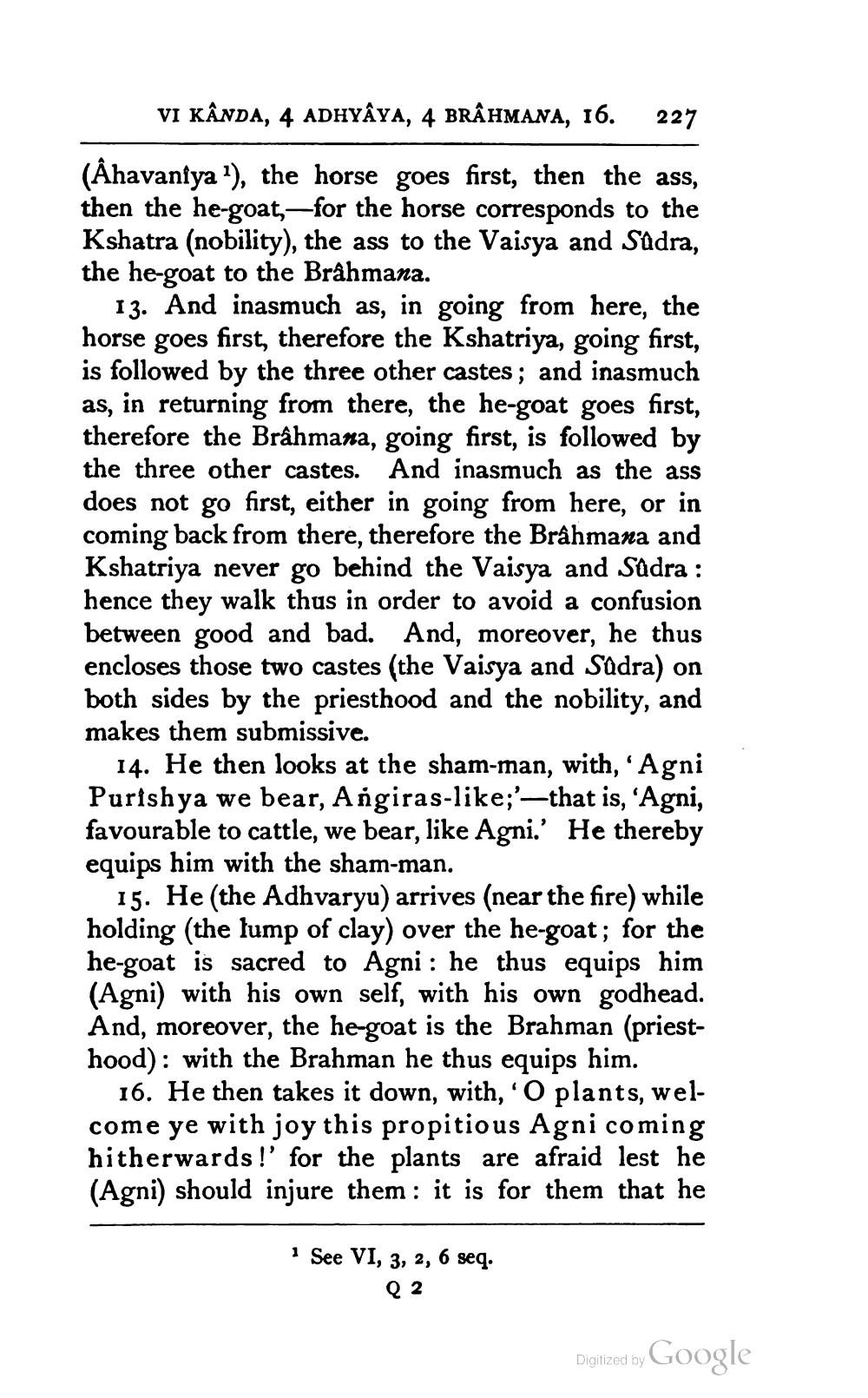________________
VI KANDA, 4 ADHYÂYA, 4 BRAHMANA, 16.
227
(Ahavaniya ), the horse goes first, then the ass, then the he-goat,—for the horse corresponds to the Kshatra (nobility), the ass to the Vaisya and Sudra, the he-goat to the Brahmana.
13. And inasmuch as, in going from here, the horse goes first, therefore the Kshatriya, going first, is followed by the three other castes; and inasmuch as, in returning from there, the he-goat goes first, therefore the Brâhmana, going first, is followed by the three other castes. And inasmuch as the ass does not go first, either in going from here, or in coming back from there, therefore the Brâhmana and Kshatriya never go behind the Vaisya and Sudra : hence they walk thus in order to avoid a confusion between good and bad. And, moreover, he thus encloses those two castes (the Vaisya and Sadra) on both sides by the priesthood and the nobility, and makes them submissive.
14. He then looks at the sham-man, with,' Agni Purishya we bear, Angiras-like;'—that is, 'Agni, favourable to cattle, we bear, like Agni.' He thereby equips him with the sham-man.
15. He (the Adhvaryu) arrives (near the fire) while holding (the lump of clay) over the he-goat; for the he-goat is sacred to Agni : he thus equips him (Agni) with his own self, with his own godhead. And, moreover, the he-goat is the Brahman (priesthood): with the Brahman he thus equips him.
16. He then takes it down, with, 'O plants, welcome ye with joy this propitious Agni coming hitherwards !' for the plants are afraid lest he (Agni) should injure them : it is for them that he
* See VI, 3, 2, 6 seq.
Q2
Digitized by Google




